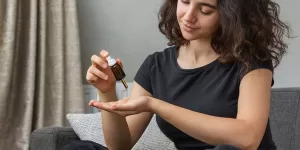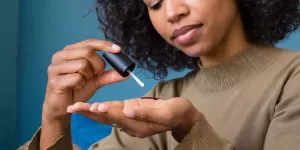«Opinión y Salud», tu recurso en línea de salud, nutrición y bienestar
«Opinión y Salud» es una revista digital donde hablamos sobre la salud, nutrición y el bienestar con un lenguaje fácil de comprender por cualquier persona.
Y te traemos esta información de parte de profesionales de la salud de forma ética y responsable.
Creemos que estar verdaderamente saludables implica mirar más allá de solo nuestros cuerpos. Por eso, también nos enfocamos en tu mente y espíritu.
En nuestro sitio web, encontrarás artículos y guías prácticas sobre muchos temas, desde una alimentación saludable hasta cómo manejar el estrés y dormir mejor.

APARECEMOS EN…






CATEGORÍAS

VPH
El VPH (Virus del Papiloma Humano) es una enfermedad de transmisión sexual (ETS). El VPH produce verrugas en diferentes partes del cuerpo y está compuesto por más de 200 tipos diferentes de virus.
Esta enfermedad suele transmitirse a través de las relaciones sexuales y el contacto piel con piel. Se puede tratar pero no se puede curar.

REFLUJO
En Opinión y Salud nos proponemos ayudarte a tratar el reflujo gástrico para que logres sobrellevar esta condición de la mejor posible.
Y lo hacemos brindando consejos sobre los distintos remedios caseros o naturales que existen para el reflujo.
O aconsejándote sobre los mejores alimentos o dieta que te ayudarán a combatir esta enfermedad.

ARTRITIS
La artritis afecta a personas de todas las edades, pero es más común en las mujeres y en las personas mayores de 40 años. La artritis reumatoide puede ser muy dolorosa y puede llevar a la deformidad de las articulaciones.
Un tratamiento para tratar la artritis por lo general incluye medicamentos e inyecciones si se va por el lado de la medicina tradicional, y una dieta si se va por el lado de la medicina natural.

HERPES
¿Se puede curar el herpes? Esta es una infección viral altamente contagiosa causada por dos tipos principales de virus: el virus del herpes simple tipo 1 (VHS-1) y el virus del herpes simple tipo 2 (VHS-2).
Estos virus infectan las células de la piel y las membranas mucosas, provocando la aparición de ampollas dolorosas y llagas en la zona afectada. El VHS-1 suele causar herpes labial, mientras que el VHS-2 se asocia con mayor frecuencia al herpes genital.

EYACULACIÓN PRECOZ
El tratamiento para tratar la eyaculación precoz puede incluir terapia sexual, técnicas de relajación, medicamentos y, en casos extremos, intervenciones médicas específicas.
La eyaculación precoz puede ocurrir antes o poco después de la penetración, causando a veces insatisfacción en la pareja. Las causas pueden ser físicas, como desequilibrios hormonales, o psicológicas, como ansiedad y estrés.

VERRUGAS GENITALES
Las verrugas genitales, también llamadas condilomatosis genital o simplemente condilomas, es una infección originada a partir de las relaciones sexuales. Las verrugas genitales son los síntomas visibles del virus del papiloma humano (VPH).
Estas lesiones se pueden tratar con diferentes cremas y procedimientos quirúrgicos.
ÚLTIMOS ARTÍCULOS
Las verrugas son las afecciones cutáneas más comunes. Estas son causadas por el virus del papiloma humano (VPH). Y aunque… Las verrugas son un síntoma de la presencia del virus del papiloma humano (VPH). Aunque no suelen ser dolorosas, las… Las verrugas del VPH se pueden tratar usando muchos remedios caseros. Sin embargo, hay algunos remedios caseros que son contraproducentes… Las verrugas del VPH se pueden eliminar con un tratamiento alternativo llamado homeopatía. Esta práctica se enfoca en la propia… El VPH es una enfermedad de origen sexual cuyos síntomas pueden reducirse considerablemente si se optimiza el sistema inmunológico del… Las verrugas del VPH se pueden tratar con vinagre blanco. Este remedio casero es utilizado por algunas personas para intentar… Las verrugas comunes del VPH se pueden tratar con pasta de dientes o Colgate. Este es un remedio casero muy… Las verrugas del VPH se pueden quitar con cinta adhesiva, conocida como terapia de oclusión. Este método no funciona para… El VPH es una enfermedad o virus cuyos síntomas son las verrugas y que no se puede curar por la…Verrugas: Aceite Ozonizado y de Diente de León
Cómo Quitar Verrugas con el Yodo
¿Es Malo Quitar Verrugas con Hilo o Cabello?
Cómo Quitar Verrugas Usando la Homeopatía
¿El VPH se Puede Combatir Comiendo Ajo?
Cómo Tratar Verrugas con Vinagre Blanco
Cómo Quitar Verrugas con Pasta de Dientes o Colgate
Verrugas: Cómo Quitarlas con Cinta Adhesiva
VPH: Plantas Medicinales para Tratar el Virus
¿Quieres que hablemos sobre algún tema en especial?
Contáctanos si quieres que hablemos sobre algún tema que te interesa. Estamos abiertos a sugerencias!








